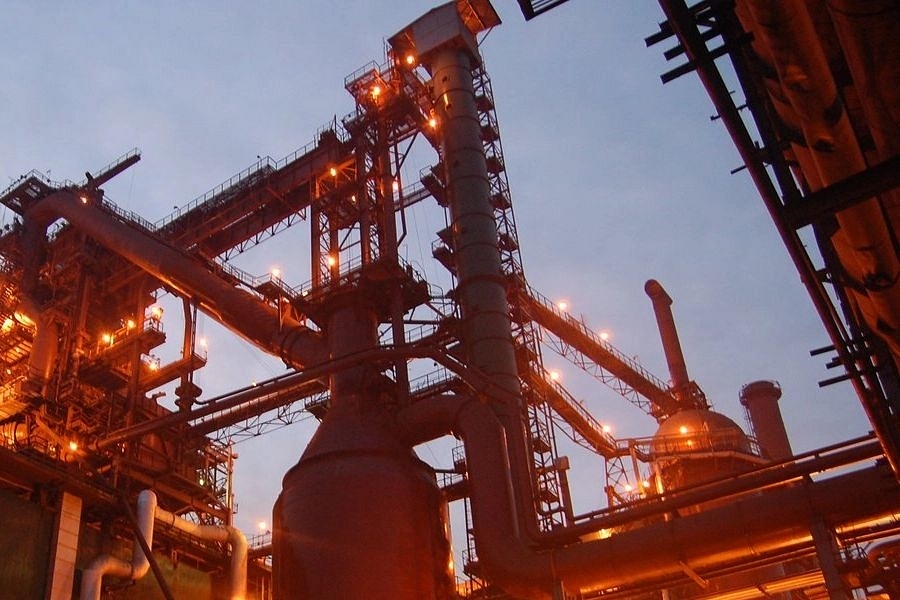Commentary
Steel Stocks Are On Roll. Should You Buy Them?
- Steel stocks have performed extremely well over the past one year. Most steel stocks have tripled or quadrupled from their March 2020 lows.
- With a lower production by the world’s largest steel producers, and lower domestic demand, it is likely that India’s steel exports will receive a boost over the short term. Coking coal prices have declined, led by low procurement from China. Improved realisation, healthy demand and lower coking coal prices augur well for the operating margins of steel companies.
- Cyclical sectors can often trap investors at their peaks. With high steel prices, the steel sector certainly looks enticing. But whether the favourable demand-supply situation continues, remains to be seen. Over the long term, the sector has not created much in terms of shareholder value.

SAIL Furnace
Steel stocks have performed extremely well over the past one year. Most steel stocks have tripled or quadrupled from their March 2020 lows. Several large investors, including Rakesh Jhunjhunwala, have bought into the space to profit from the current momentum. What has contributed to the meteoric rise of steel stocks?
Rapid Increase In Commodity Prices
Commodity prices have been increasing at a rapid pace globally. The global steel prices witnessed a significant rally in the second half of FY21, especially in the US and Europe. The HRC (hot-rolled coil) prices in the US have spiked to above $1,600 per tonne in May 2021 from the levels of around $550 per tonne in May 2020. Steel prices in the U.S. reached a nearly 13-year high.
Domestic flat-steel prices have nearly doubled to Rs 72,000 per tonne in June 2021 from Rs.38,000 per tonne in June 2020. In comparison, long-steel prices rose 1.4 times to Rs.57,900 per tonne. Healthy demand growth, systemic liquidity, iron-ore shortages and high global prices have propelled steel prices upwards.
Over the past few months, Indian steel companies have become net exporters of steel. Domestic demand has been low because of localised lockdowns and a slowing economy. A high international rate for steel, combined with a lower domestic demand has propelled steel companies to become net exporters of steel.
Consolidation In Steel Sector
Cash flows have almost doubled for steel companies with the rise in prices. The companies have used the cash to pay back debt. Tata Steel has managed to reduce its debt from Rs.1,16,328 crores to Rs.88,501 crores in the past year. Similarly, Steel Authority of India Ltd. (SAIL), has reduced its debt from Rs.54,187 crores to Rs.35,576 crores. The commodity price boom can help these companies deleverage their balance sheets and stabilise their finances. Once the balance sheets are deleveraged, the producers can undertake new expansion projects.
The export boom received a leg-up with the Russian and Chinese governments trying to curb exports and production respectively. Domestic steel prices in Russia have been increasing at a rapid pace, forcing the government to apply a 15 per cent export duty for five months. China, which is the world’s largest steel producer, has undertaken capacity utilisation reductions to reduce carbon emissions.
With a lower production by the world’s largest steel producers, and lower domestic demand, it is likely that India’s steel exports will receive a boost over the short term. Coking coal prices have declined, led by low procurement from China. Improved realisation, healthy demand and lower coking coal prices augur well for the operating margins of steel companies.
What Could Go Wrong With Steel Stocks
However, investors should keep in mind that the sector is cyclical. The steel sector was in vogue in 2007, however after the financial crisis, it took years for the sector to rebuild itself. Over the long term, the sector has not created much in terms of shareholder value. Cyclical sectors are usually short-term plays. These sectors should be bought into when everyone hates them. For instance, the sugar sector was down in the dumps in 2014. However, its performance improved and it became one of the best performing sectors in the 2015 to 2017 period. The sector performed badly in 2018. Rather than becoming a victim to survivorship bias, investors should also examine the companies that did not survive the consolidation phase.
Cyclical sectors can often trap investors at their peaks. With high steel prices, the steel sector certainly looks enticing. But whether the favourable demand-supply situation continues, remains to be seen.
Introducing ElectionsHQ + 50 Ground Reports Project
The 2024 elections might seem easy to guess, but there are some important questions that shouldn't be missed.
Do freebies still sway voters? Do people prioritise infrastructure when voting? How will Punjab vote?
The answers to these questions provide great insights into where we, as a country, are headed in the years to come.
Swarajya is starting a project with an aim to do 50 solid ground stories and a smart commentary service on WhatsApp, a one-of-a-kind. We'd love your support during this election season.
Click below to contribute.
Latest